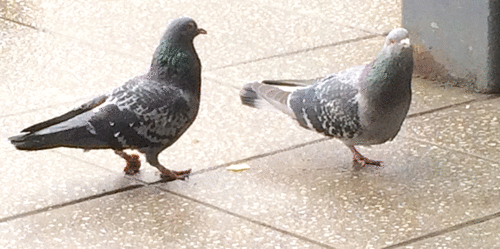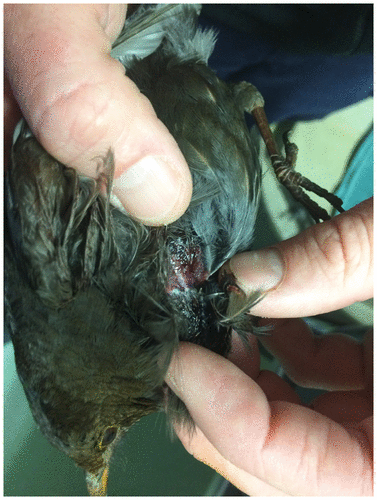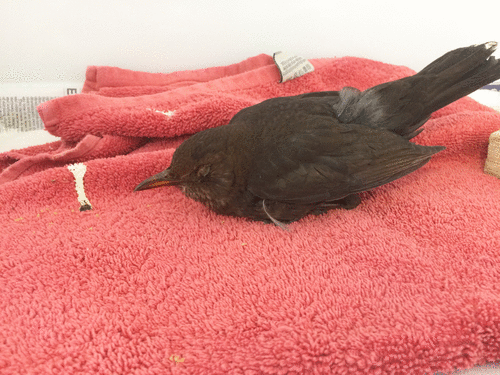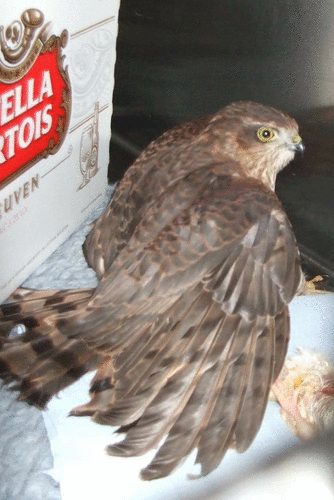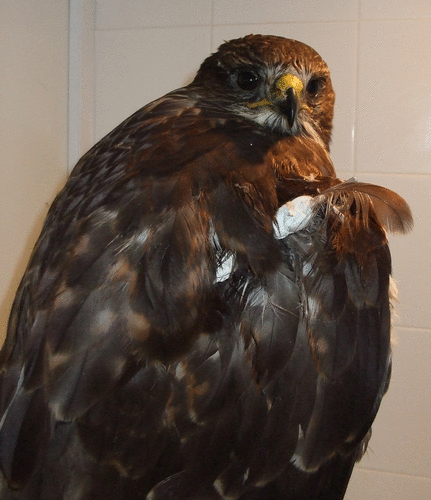Figures & data
Blackbird with cat bite injuries and thoracic puncture. Note the hunched appearance typical of this condition. Photo courtesy of Vale Wildlife Hospital.
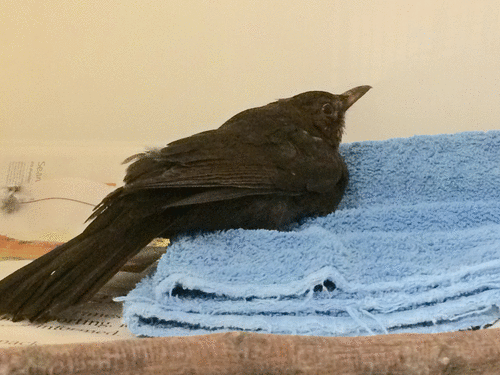
This is the same patient, with an air sac visible due to thoracic puncture. This presentation, along with the cat bite injury, would have been very painful to the bird and would warrant analgesia. Photo Courtesy of Vale Wildlife Hospital.
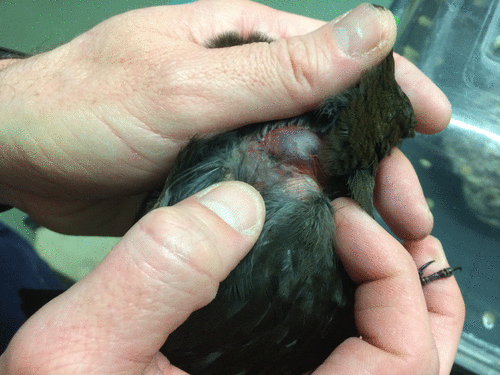
Young collared dove with cat injuries to back, right leg and tail feathers. Large feathers pulled out are extremely painful. This bird was started on a course of meloxicam, antibiotics and wound flushes. Initially it was not eating therefore required crop feeding. Photo courtesy of Vale Wildlife Hospital.
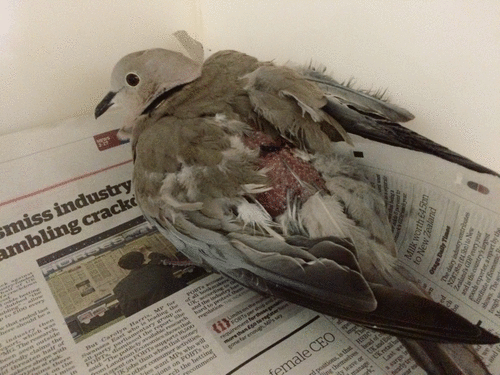
Tawny owl with a superficial corneal ulcer. Eye ulcers often warrant systemic as well as topical analgesia (courtesy of Adina Valentine)
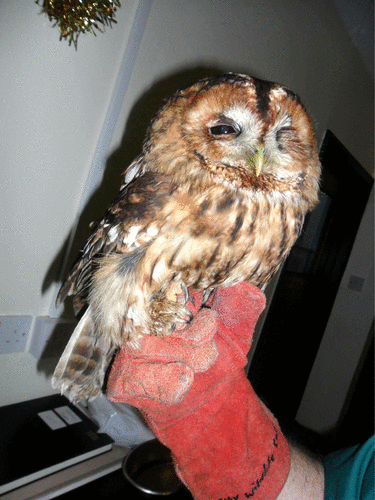
Buzzard with an oral trauma, that progressed to an abscess. Any sizeable abscess is a painful condition and would warrant pain relief (courtesy of Adina Valentine)
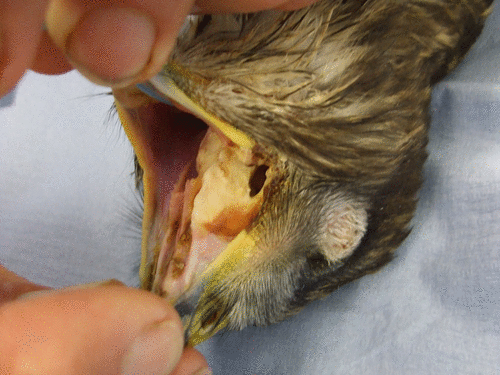
It is difficult in this case to ascertain whether this behaviour is caused by general debilitation, or pain, until diagnosis. The pigeon was diagnosed with Trichomoniasis, or ‘mouth canker’. The patient was in early stages of shock, due to being weak, dehydrated and hypothermic from having been unable to eat for so long. So the fluffed up appearance and lethargic behaviour could be a result of the illness, but there might also be potential for some oral discomfort. Photo courtesy of Vale Wildlife Hospital.
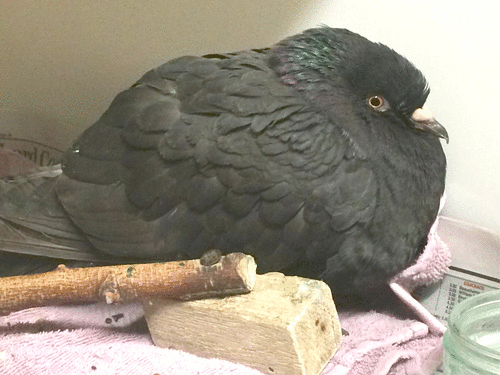
This young kestrel presented with hypersalivation and neurological signs. It was started on butorphanol as an analgesic just in case there was any gastro-intestinal pain or discomfort due to ingestion of a potentially toxic substance.
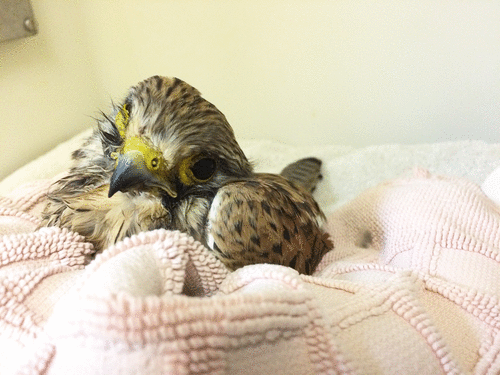
Baby Verreaux’s eagle with a gastro-intestinal infection. Note the dull eyes which are not fully open. The patient exhibited twittering vocalisation and a hunched/ head down posture, which resolved with administrations of butorphanol.
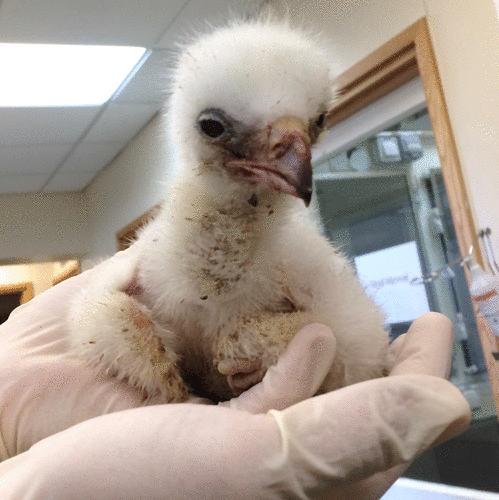
Bumble foot is a common painful condition in farmed birds. With kind permission from the British Hen Welfare Trust
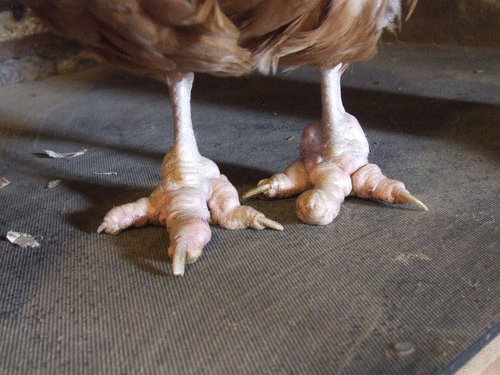
Cloacal prolapse is a common painful condition in farmed laying hens. With kind permission from the British Hen Welfare Trust
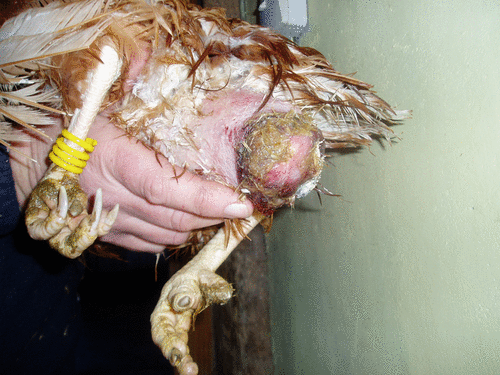
The difficulty in this photo is differentiating between pain and anaesthetic recovery. This is an ex- battery hen post right femoral fracture repair surgery. However given that chickens rarely show outward signs of pain and do their best to pretend they are normal, and this bird had been extubated two hours prior to this photo and was minimally responsive to stimulus, the decision was to increase the frequency of the analgesia post op.
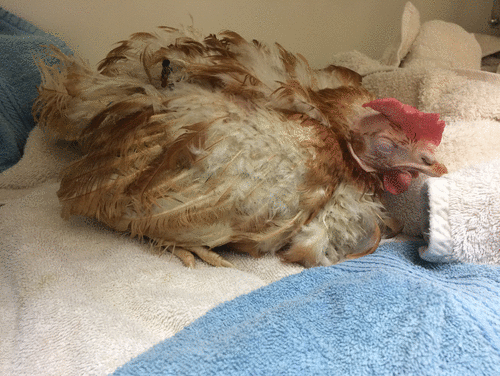
The same patient the next morning following four hourly butorphanol, an injection of meloxicam, and two administrations of fluids and crop feeding. Although she has fully recovered from the anaesthetic, note the almost normal weight bearing on the affected leg.
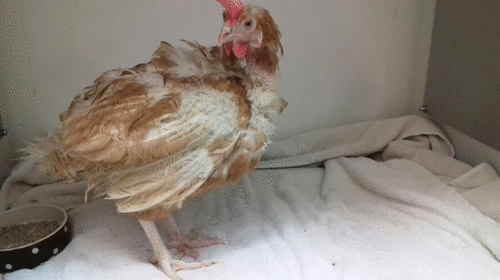
Table 1. Table of pain studies in birds
Chicken showing signs of pain following a cloacal prolapse. She was administered tramadol and a cold compress, and following fluid therapy, meloxicam.
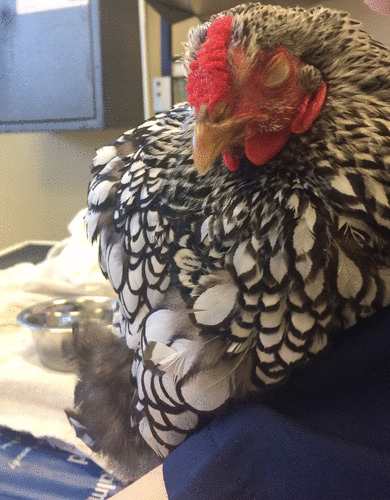
Once in her kennel you can observe that she is unwilling to sit down due to the prolapse. She was also administered midazolam to help stop her straining, which is why her wings are dropped/ relaxed.
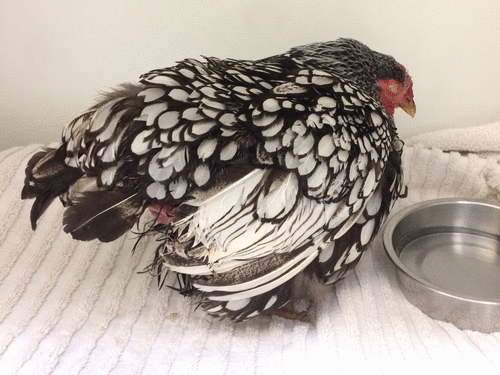
Peregrine falcon showing wing drop. On admission it received butorphanol, and on examination and x-rays, it was discovered to be a soft tissue injury. The patient was started on oral meloxicam and tramadol. This bird always positioned itself with its good wing towards us and its damaged wing away from us (guarding/ self preservation behaviour).
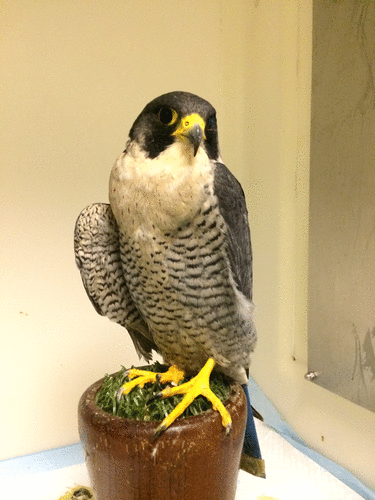
Conure with a beak fracture on the lower right hand side. The patient had been unable to eat for some time and was weak, dehydrated and painful. He presented on the bottom of his cage, fluffed up, closing his eyes and very quiet. This photo was taken after initial treatment of opioid analgesia, warmth, SC fluids and crop feeding. Following rehydration the bird was started on meloxicam.
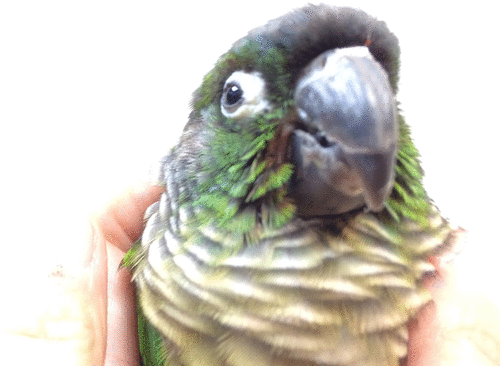
Recovering feather plucker in a Senegal parrot with proventricular dilatation disease. Although feather plucking has many different causes, discomfort due to this condition can be a reason, which is why this patient was on celecoxib.
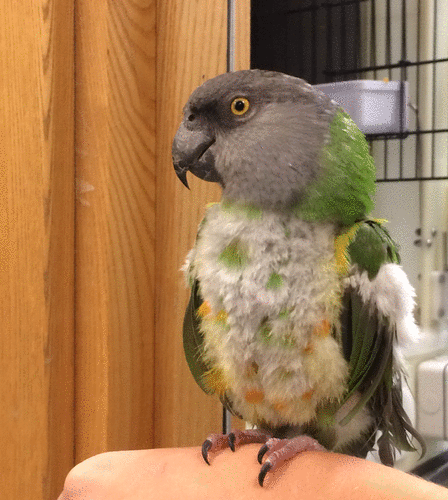
Two pigeons, both with foot injuries. The one on the left has a constriction injury from string and the foot was swollen, red and deformed. The bird on the right had a stump in place of its left foot. Both birds were significantly lame and exhibited one – legged standing.
